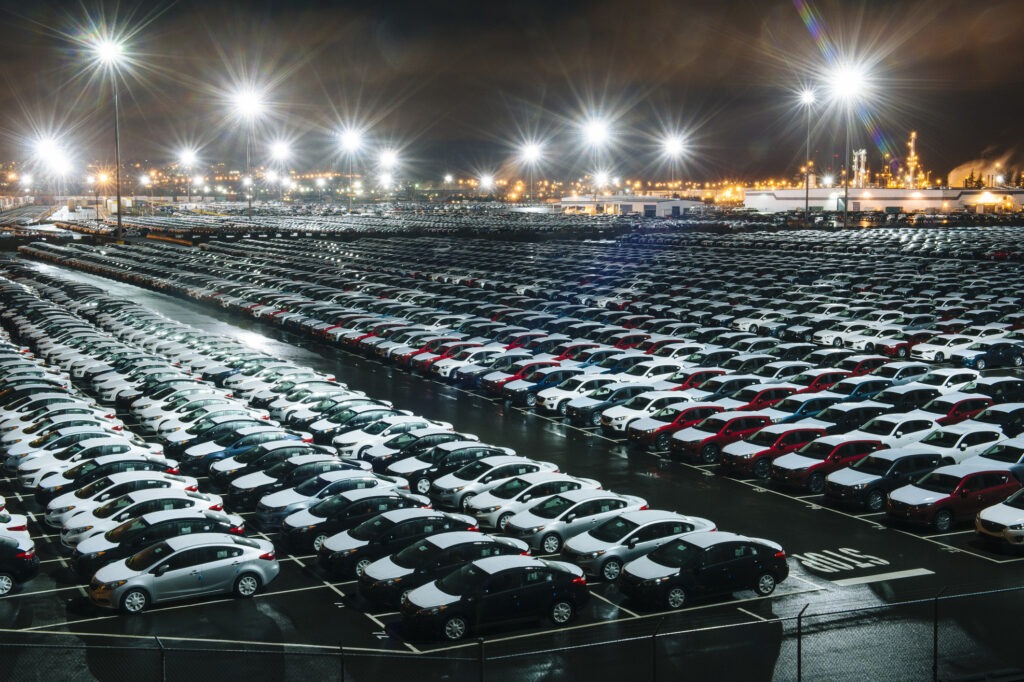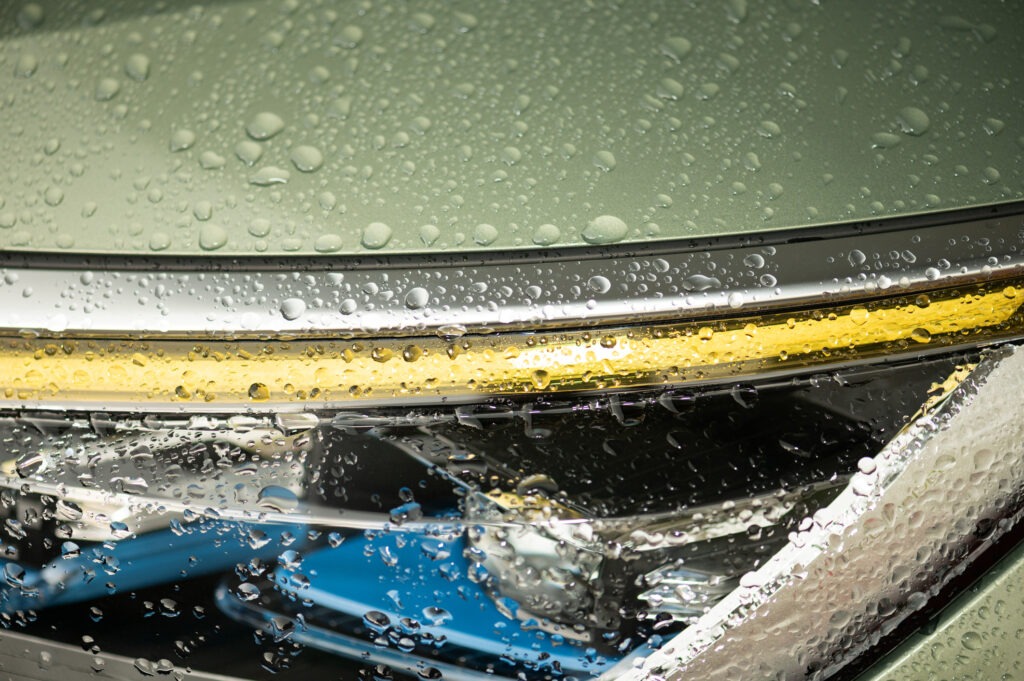Powertrain trends starting to appear in major European markets
05 March 2024

As the second month of 2024 ends, data from three of Europe’s biggest new-car markets is outlining the likely successes and struggles to come. Autovista24 special content editor, Phil Curry, explores the details.
Three of Europe’s biggest automotive markets are enjoying a strong start to 2024, with registration figures showing significant growth in February.
France and Italy achieved double-digit growth last month, while Spain missed out on this feat by a very slim margin. The figures show that the country’s markets are continuing to bounce back from the challenges of recent years, with little sign of slowdown.
However, the markets are also seeing divergent trends. While France is seeing interest across all powertrains, both Italy and Spain are increasingly becoming reliant on petrol and hybrids to drive their markets.
BEV boost for France
The French automotive market saw new-car registrations rise by 13% in February, with 142,598 units delivered, according to data from PFA. This was the best improvement of these three big European markets in the month.
France also saw diversity in powertrain uptake. Petrol registrations only grew by 2% year on year, following a drop in deliveries in January. With diesel also falling by a significant 30.5% in the month, the internal-combustion engine (ICE) market recorded 5.7% fewer registrations.
Diesel’s decline in most European markets has impacted ICE registrations. However, most of the loss has been absorbed by the performance of petrol powertrains. France is now at a tipping point, with electrified models overcoming the dominance of ICE.
This was further highlighted by the performance of battery-electric vehicles (BEVs). The powertrain increased registrations by 31.9% compared to February 2023, with 25,824 units taking to the country’s roads.
This made it the second most-popular powertrain in the country. There is still a gulf between all-electric models and petrol, however, the gap is smaller than it was in January, with BEV registration totals over half of those of petrol.
In terms of market share, petrol held 33.7% in February, down by 3.6 percentage points year on year. BEVs increased their hold on the market, with 18.1% of the total, up 2.6 percentage points from the same month last year. The technology is seemingly increasing its popularity in France.
HEVs slip from second
Full hybrid (HEV) models also improved last month, with 23,816 deliveries equating to an increase of 28.8% year on year. This was not enough to keep the powertrain in second place. Despite this, its market share increased by two percentage points to 16.7%.
The French figures split out mild hybrids (MHEVs), which offer electrical assistance to ICE powertrains but do not allow for any electric range. Registrations of these powertrains improved by 63.7% in the month to 17,428 deliveries and a 12.2% market share.
The market for plug-in hybrids (PHEVs) bounced back from a slow result in January. Registrations grew 11.9% year on year to 11,738 units. The technology is still the weakest mainstream powertrain, not including the ‘others’ category. It lost 0.1 percentage points of market share in the month, taking 8.2% of the total.
The French year-to-date figures highlight a similar trend to February, with the totals across the two months of 2024 showing petrol deliveries dropping by 0.7%. Meanwhile, BEVs moved into second with a 33.9% increase in deliveries.
The market may be seeing a shift away from single-powertrain dominance, with no one technology holding a significant share of the figures.
Petrol pounces in Italy
The latest powertrain breakdown from the Italian automotive authority ANFIA shows the country’s new-car registrations improved by 12.8% in February. A total of 147,026 passenger cars took to the roads for the first time.
Italy has long been driven by the hybrid powertrain, with ANFIA combining both HEVs and MHEVs into this category. This trend continued in February, with hybrids improving their deliveries by 16.1%, to 55,407 units.
However, unlike in France, petrol powertrains staged a resurgence in February. Figures were up by 33.4% last month, although the 45,901 registrations were just under 10,000 units down on the hybrid total. Yet this also meant a big jump in market share to 31.2% from 26.4% at the same point last year.
Diesel registrations declined by 11.8% while its market share fell to 14.6%. However, the 21,455 deliveries were still higher than those seen in other big European markets, with the exception of Germany. The performance of petrol meant that the overall ICE market share improved, albeit by just 0.7 percentage points, to 45.8%.
Two-powertrain country
Unlike the French market, Italy is very much a two-powertrain country, with hybrids and petrol models leading the way. This is to the detriment of the electric-vehicle (EV) market, with BEVs and PHEVs struggling to make an impact.
Only 5,007 all-electric passenger cars were registered in the country during February. This equated to year-on-year growth of 3.1%, but the powertrain represented just 3.4% of the market total, down by 0.3 percentage points.
PHEVs faired much worse. Registrations were down by 16.6% with 4,662 deliveries. This equated to a 3.2% market share, a drop from last year’s 4.3% hold. Combined, EV deliveries dropped 7.4% in February and captured just 6.6% of all registrations.
In the first two months of the year, hybrids increased their registrations by 15.2%, while petrol improved by 30.1%. Despite diesel falling 10.2% in 2024 so far, ICE registrations have increased by 13.4% overall.
BEVs have struggled so far, with deliveries declining by 2.7%, while PHEVs fell 25.2%. Combined, this equated to a 43% rise in EV registrations throughout January and February.
ANFIA hopes that the situation with EVs will improve once a new decree from the Italian prime minister is published. It detailed incentives for the renewal of the country’s parc and plans to help reduce CO2 emissions. Until this new law is made, the country is in a ‘holding pattern’, as those wanting to buy an EV are waiting for the best purchase incentives to be offered.
‘Certainly, to support demand and accelerate the pace of renewal of the fleet, the measure should, above all, act as a driving force in the adoption of new technologies, also thanks to the opening of incentives to all companies, in particular, by encouraging the further spread of cars with low- or zero-emissions,’ commented Roberto Vavassori, president of ANFIA.
Spain short of registration surge
There is cautious optimism in the Spanish market, after the 9.9% rise in registrations, reported by ANFAC, extended the country’s positive figures into a 14th month.
Yet the EV market in the country remains sluggish. Authorities have highlighted a need for increased registrations to break the one million new-car barrier in 2024.
A total of 81,348 passenger cars were registered last month, with the majority (40.1%) of these being petrol powertrains. However, just as in France, the market for this fuel type appears to be slowing.
The 32,661 units delivered was only up by 3.7% on last year’s figures. Despite this improvement, its market share fell from 42.6% in February 2023, suggesting a potential cooling of interest.
It was the hybrid market, combining HEVs and MHEVs, that improved the most, with 28,626 units representing a 26.6% increase year on year. This meant hybrid drives held 35.2% of the market, up from 30.6% a year ago.
This indicates another country is moving towards a less diverse industry, instead relying on two powertrains.
Acceleration needed
Spain is another country that is struggling to inspire buyers towards EVs. Both BEVs and PHEVs recorded improvements in the month, with all-electric powertrains up by 15.4%. However, this only equates to 3,804 units, and a 4.7% market share. PHEVs saw a rise of 15.6% in February but, just like BEVs, this was on a smaller number, with 5,563 registrations in the month and a 6.8% market share.
Therefore, PHEVs remain the most popular plug-in powertrain in Spain, giving the country a problem when it comes to reducing its CO2 emissions from vehicles. It is up to PHEVs and HEVs, which still emit the greenhouse gas, to slowly chip away at the country’s average CO2 levels, while it waits for the BEV market to mature.
‘We must accelerate the pace, our market has a 13% electrified share [made up of PHEVs and BEVs], while Europe is already above 20%,’ commented José López-Tafall, general director of ANFAC.
‘Not only is there the issue that we are not reaching the leading group in Europe in terms of electrification, but we are also not reaching the sales rate that we should have to achieve the emissions reduction targets demanded by Europe.
‘This year the objective increases to close the electrified market at 280,000 units, this means that 23,000 new cars should be registered every month. It has been two months, and the market has close to 17,000 units. Either we accelerate and demonstrate that Spain is committed to electrification, or we run the risk of our sector falling out of the industrial race for electric vehicles,’ López-Tafall added.



